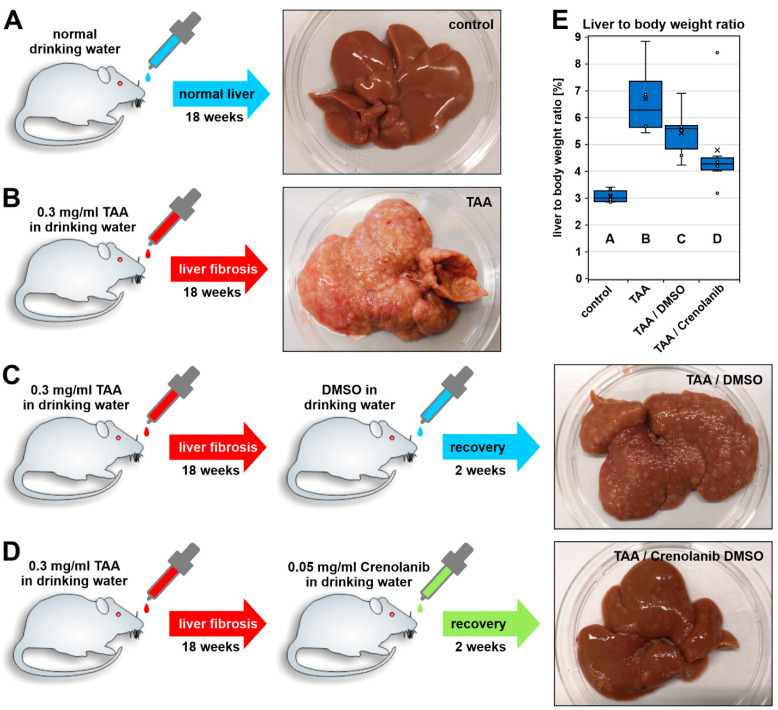Figure 1.
Experimental setup of the TAA-induced liver fibrosis model in rats. Rats were treated with 0.3 mg/mL thioacetamide (TAA) for 18 weeks via drinking water to induce liver fibrosis. (A) The control group received normal water and showed no changes in liver morphology, (B) the TAA-treated group exhibited the typical nodular liver surface characteristic of the fibrotic liver. (C,D) The livers were allowed to recover from liver fibrosis after the cessation of TAA treatment in the absence and presence of Crenolanib (0.05 mg/mL) for 14 days. (C) The control group with fibrosis was treated with an equal volume of the vehicle, dimethyl sulfoxide (DMSO), which was used as a solvent for Crenolanib. (C,D) Comparison of the liver morphology indicated accelerated liver regeneration in (D) the Crenolanib-treated group. (E) Improved recovery from fibrosis in the presence of Crenolanib was also indicated when the ratio of the liver to the body weight was determined (cross: arithmetic mean; line: median; boxes: 50% of the data; (A) n = 6; (B) n = 4; (C,D) n = 6).

